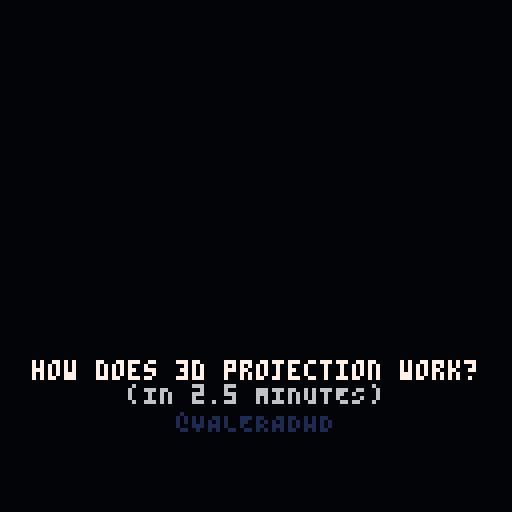How does 3D projection work?
Found this cute little explanation on pico-8. Not as good as @that_name_explains_it_better , but fun to watch :)

Link
Live Long And Tinker

Found this cute little explanation on pico-8. Not as good as @that_name_explains_it_better , but fun to watch :)

Live Long And Tinker
Thanks for sharing!
I like it! However, I think that this 3d projection method is quite interesting (I might even give it a try, perhaps!) but is different from most of the 3d projection methods I know.
The traditional 3d projection method is just (for xyz points, and a field of view of FOV)
FOV*x/z
FOV*y/z
And this method works if you are rendering a 3d space. This method has some similarities (divide x values by distance, then scale up by FOV) but the main difference is that it stores a 3d space.
Due to this, this method seems similar to raycasting - although obviously, there is no 'ray' or 'casting'. That's because this uses the method of rendering a 2d map onto a 3d space - meaning it only stores a 2d space. However, it still incorporates elements of the prior method inside it (again, divide x values by distance then scale up by FOV).
Very interesting, thanks for sharing, @tinker_guy_who_shared_it
Success! After about half an hour of work, I 'tinkered' up a very rough program that works using exactly this method!
:embed https://microstudio.io/this_name_is_taken/3dtinkerprojection/2KKR4ZTR/
Has a little more work to go before I release it though.
Uuuuh, looking good :) @that_name_is_multidimensional
LOL, had a suspicion you might have a go at it. Yes, is 2d flat map data only, kind of like the list based raycaster. But again, looking so cool :)
I believe you'll find this tutorial useful as well: